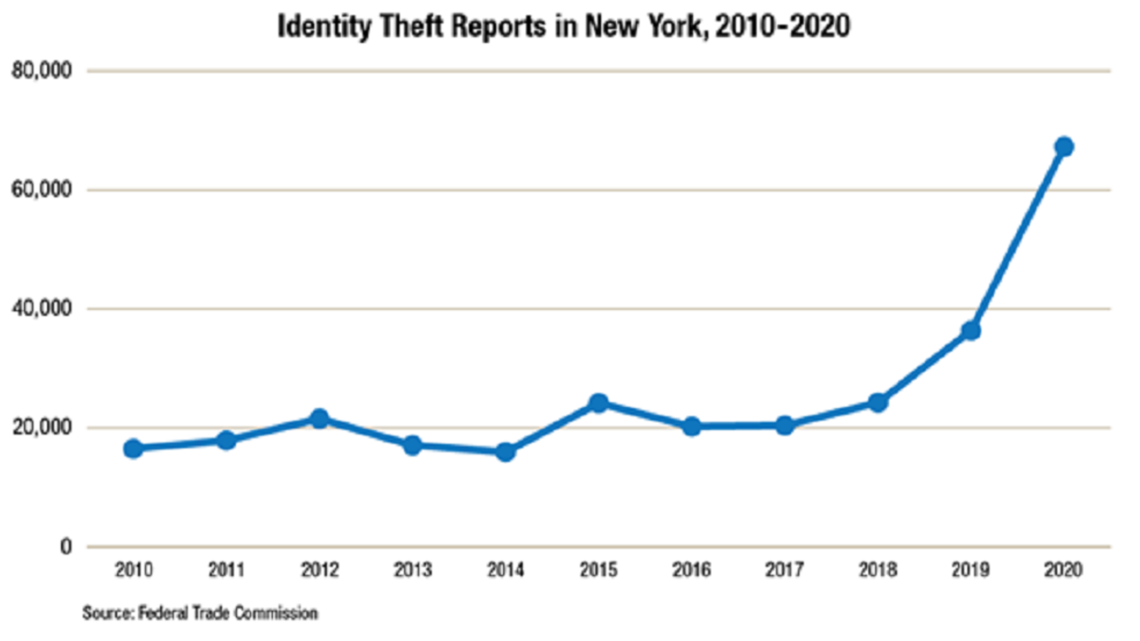BUFFALO, N.Y. — Identify theft cases in New York state steadily increased in 2020.
That's according to New York State Comptroller Thomas DiNapoli.
The Federal Trade Commission has received 67,000 complaints from consumers. That is up 85% from the previous year.
“In the midst of the stresses caused by the pandemic, many New Yorkers also dealt with identity theft last year,” said DiNapoli. “Even when there’s no money stolen, resolving the consequences of stolen personal information is complicated and can take months of effort. Often the pain is really felt later, when victims have trouble getting a job, renting an apartment, or getting a loan because their identity was stolen. We should all take common-sense steps to keep personal information confidential, and companies must do more to protect consumers from identity theft.”


Credit card fraud tops the list of complaints. Nearly 25,000 New Yorkers filed reports for credit card fraud, either using an existing account or opening a new account.
More than 3,600 identify thefts were related to the COVID-19 pandemic, with two-thirds of those complaints related to unemployment benefits or other government programs.
In addition to credit card fraud and reports related to the pandemic, officials say identify thieves stole people's personal information to obtain prescription drugs, medical services or insurance coverage and other purposes.
While the US Department of Justice does not breakdown financial losses to identify theft by state, losses by NYS residents would be more than $800 million based on it's share of identify theft reports that the FTC has received that year, according to the comptroller's office.
The comptroller offers these tips to protect yourself from identify theft:
• Carry only the credit and bank cards you need.
• Use two-factor authentication for online security where possible.
• Use a password manager or strong passwords, including a mixture of capital letters, numbers, and symbols, and change passwords frequently.
• Check bank or credit statements regularly.
• When online shopping, look for indications that the site is secure, such as a secure URL that begins with “https” (rather than “http”) and a lock icon near your browser’s location field.



